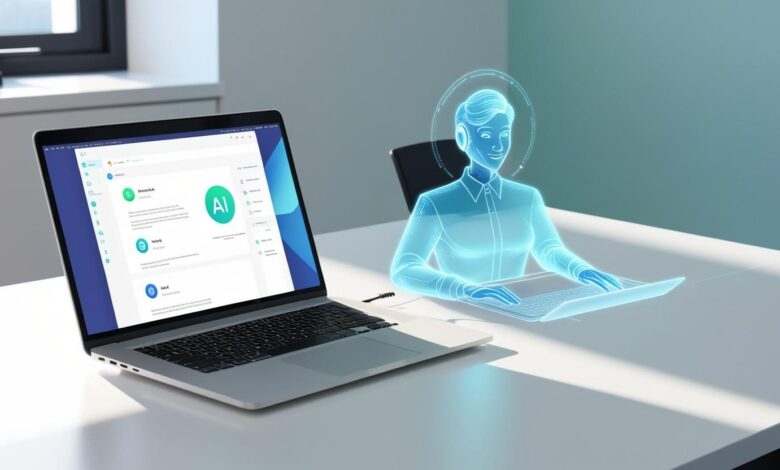
Ever woken up feeling overwhelmed at 2 a.m., unable to get to sleep, but aware it’s a very unsociable hour to reach out to your therapist? Or perhaps you don’t have a therapist because you don’t think your problems are big enough, or feel uncomfortable addressing certain topics with other people?
Approximately 1 in 4 adults in England will experience a mental health problem each year. Meanwhile, in the US, 43% of adults aren’t fully comfortable discussing their mental well-being.
In these scenarios, a tool that listens, responds with empathy, and suggests calming techniques might provide some comfort. From chatbots offering a space to decipher feelings to intelligent platforms detecting early signs of distress, technology is bridging critical gaps in care—making mental health support more accessible, personalized, and available around the clock.
But as AI steps in to support well-being, it must also safeguard trust, privacy, and the human nature of mental health.
Personalized Support, Anytime, Anywhere
One of AI’s greatest strengths is its ability to provide tailored support at scale.
By analyzing user interactions and patterns, AI can recommend personalized wellness strategies, suggest mindfulness exercises, or even detect early signs of emotional distress. A recent study trained a large language model on a dataset of over 10,000 labeled social media posts, returning an 83% accuracy in classifying posts displaying signs of stress. With this ability to identify stress early, individuals can experience improved emotional well-being, and limit stress’s negative impacts on physical health, including weakened immune systems and digestive issues.
While data analysis provides valuable insights, the impact of personalized AI support lies in the user experience. Another recent study interviewed nineteen individuals about their experiences using generative AI chatbots for mental health. Participants reported a positive impact in various ways, including improved relationships, healing from trauma and loss, better moods, and how it complemented their existing therapeutic journeys.
Unlike traditional therapy models, which may be limited by availability or cost, AI-powered solutions can offer guidance 24/7. When designed thoughtfully, these tools don’t replace human care but enhance it—helping people feel supported between therapy sessions or when professional help isn’t immediately available.
Building Trust Through Secure and Ethical AI
For AI to secure its space in supporting mental health, people need to feel confident that their sensitive conversations and personal data are safeguarded. Confidence in public healthcare AI, however, is growing: 75% of UK patients were happy to share certain personal data to help develop AI systems in the NHS. Still, the perspective of healthcare providers themselves is more critical, as they must keep on top of the latest GDPR regulations and Europe’s AI Act in the EU, HIPAA rules in the US, and how to streamline technological solutions—all of which can be very time-consuming, especially for industries like healthcare where priorities differ from data experts.
Lack of internal AI expertise troubled 58% of US medical practitioners implementing AI earlier this year. This is where secure application programming interfaces (API) and software development kits (SDKs) can do some of the heavy lifting. By embedding compliance, encryption, and strict data storage and deletion rules into AI-driven therapy solutions, companies can create tools that empower users without compromising their privacy.
Developers are creating innovative chatbot solutions like Woebot and Elomia that offer accessible mental health support through cognitive-behavioral techniques. Practitioners evaluating similar tools must look for features including empathetic natural language processing (NLP), active listening prompt techniques, and 24/7 availability for crisis intervention.
The Future of AI in Mental Well-Being
Already, studies find non-healthcare-focused generative AI tools like ChatGPT useful for patients looking for support between psychotherapy sessions, during their psychotherapists’ vacations, and for people suffering from mental illnesses who are not yet in psychotherapy. Whether people use GDPR/HIPAA-compliant platforms with professional oversight or currently free, generic solutions like ChatGPT, the conversation around AI and mental health is no longer about “if” but “how” we can use technology responsibly to improve lives.
Although chatbots might be more accessible for certain people, such as those who cannot afford therapy or have unusual work schedules, it’s important these users understand what chatbots can and can’t do. For example, chatbots can simulate empathy, but they do not possess the inherent ability to understand the emotional weight behind word choices. Nor can they diagnose complex mental health conditions such as bipolar disorder or severe depression with suicidal ideation. These conditions require the expertise of trained mental health professionals, meaning seamless human handover to connect users with healthcare providers is critical.
Going forward, when building mental health AI or generic chatbots, developers must minimize potential risks of misinformation by providing clear disclaimers about AI’s limitations, the importance of seeking professional help, and strong protocols for flagging and escalating high-risk behaviors.
Integrating with easy-to-use referral and telehealth systems helps increase accessibility to mental health care while keeping a trained medical professional in the driver’s seat. Practitioners can investigate embedding secure chat APIs for instant patient-provider text communication. Or, for real-time video and audio, allowing virtual face-to-face consultations, telehealth video SDKs can help. These integrations enable healthcare professionals to deliver mental health platforms while meeting strict healthcare standards.
While these solutions still include an accredited medical practitioner on the other end of the device, generative AI and NLP technologies can add a different layer of support. This includes transcribing patient calls and training models with each new anonymized dataset for a more accurate, non-biased mental health context.
As the industry moves forward, collaboration between developers, healthcare providers, and policymakers will be key to ensuring AI enhances—not replaces—the human connection at the heart of mental health care. With the right safeguards and ethical frameworks in place, AI has the power to make mental health support more accessible, personalized, and effective for patients and practitioners.




